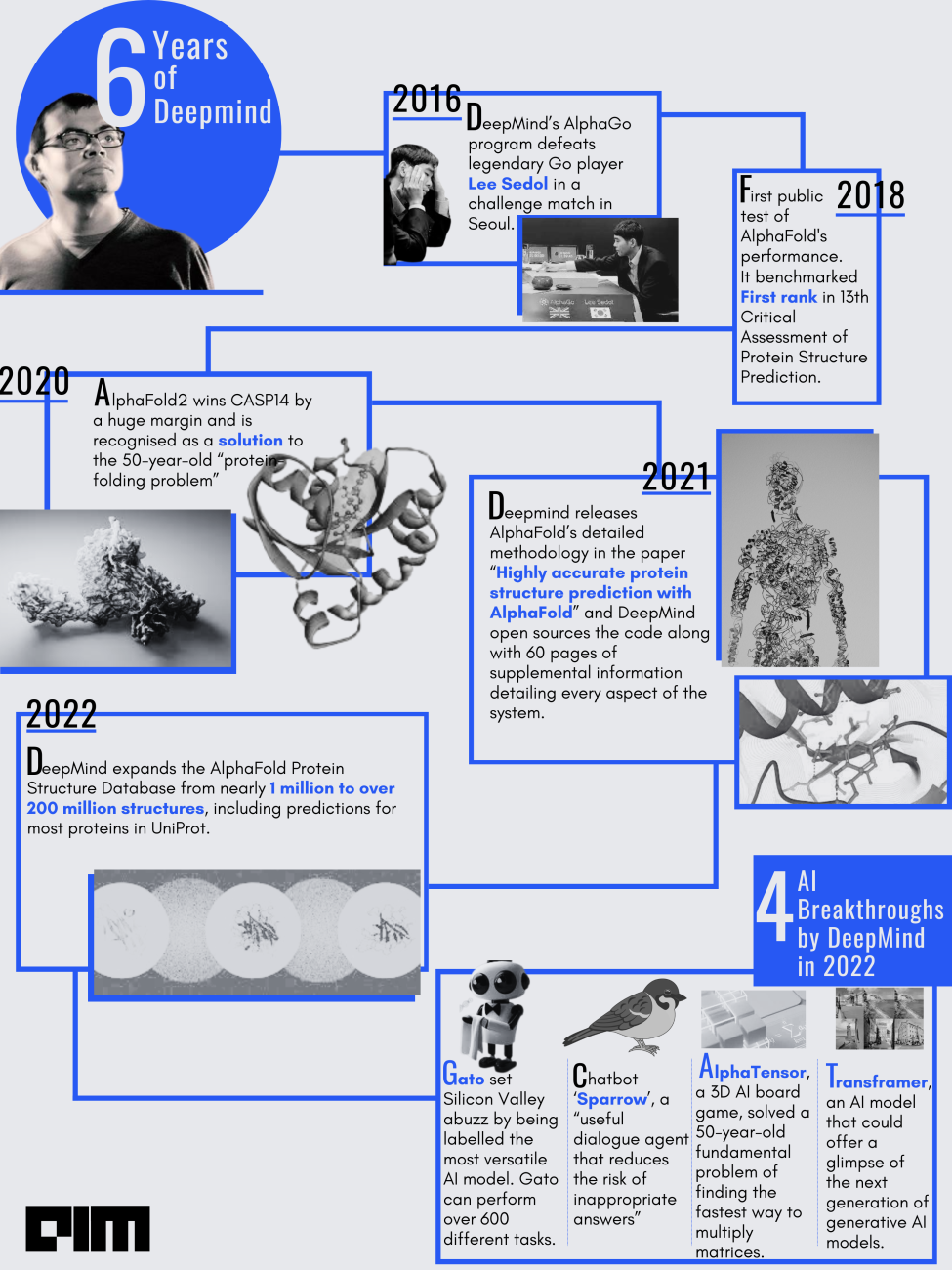|
Listen to this story
|
It’s incredible what humans have achieved with simple algorithms by forcing them to parse more data. Of course, the best thing about science is that you have to show your work. And right now, DeepMind is doing just that. So it has every opportunity to prove the naysayers wrong.
DeepMind, a unit of Alphabet, uses AI to solve daunting scientific challenges. A year ago, its AlphaFold cracked a problem that had stumped biologists for decades. Its predictions are becoming a go-to tool for scientists researching everything from breakthrough drugs to enzymes that can digest plastic.
Here are some instances to show how Google Deepmind became part of the AI revolution in 2022!

How versatile can AI models be?
Billed as a generalist agent, Gato set Silicon Valley abuzz by being labelled the most versatile AI model. Gato can perform over 600 different tasks. It can drive a robot, caption images, identify objects in pictures, and more. It is probably the most advanced AI system on the planet not dedicated to a particular function.
To some, it is evidence that the industry is on the verge of reaching a long-awaited, much-hyped milestone: AGI.
How well can machines understand humans?
Even after years of evolution, conversational AIs are nowhere near the maturity level to hold human-like conversations. We all remember Google’s “breakthrough conversation technology” LaMDA and the semi-convincing debate that swirled around a few months ago.
Deepmind released its AI chatbot ‘Sparrow’, a “useful dialogue agent that reduces the risk of unsafe and inappropriate answers”. As per the subsidiary of Google’s parent company, Alphabet, the chatbot is designed to “talk, answer questions and look up evidence using Google when it’s helpful to inform its responses”.
What is the fastest way to multiply matrices?
Matrix multiplication is at the core of everything computational.
DeepMind’s latest AlphaTensor, a 3D board game AI system, answered a 50-year-old fundamental maths question of finding the fastest way to multiply matrices.
The researchers trained a brand new version of AlphaZero to play the game. Instead of learning the best moves, the network learned the best steps when multiplying matrices. Then, using reinforcement learning, the system was rewarded for winning in as few moves as possible.
That’s not it.
Two Austrian researchers at Johannes Kepler University Linz bested that new record by one step. When the DeepMind paper dropped, JKU researchers took their algorithms and fed them into their programme. It took just a few seconds to find the result.
Can AI generate videos from a single image?
Generative AI has pivoted from labs to our computers, kicked off by OpenAI’s large-scale language model GPT-3. Now we have Transframer, an AI model that could offer a glimpse of the next generation of generative AI models.
It’s a nifty little trick on the face of it, but the implications are much larger than just an interesting GIF. Transframer could one day offer a new avenue within the video game industry to build environments digitally, rather than relying on time-consuming methods.



















































































